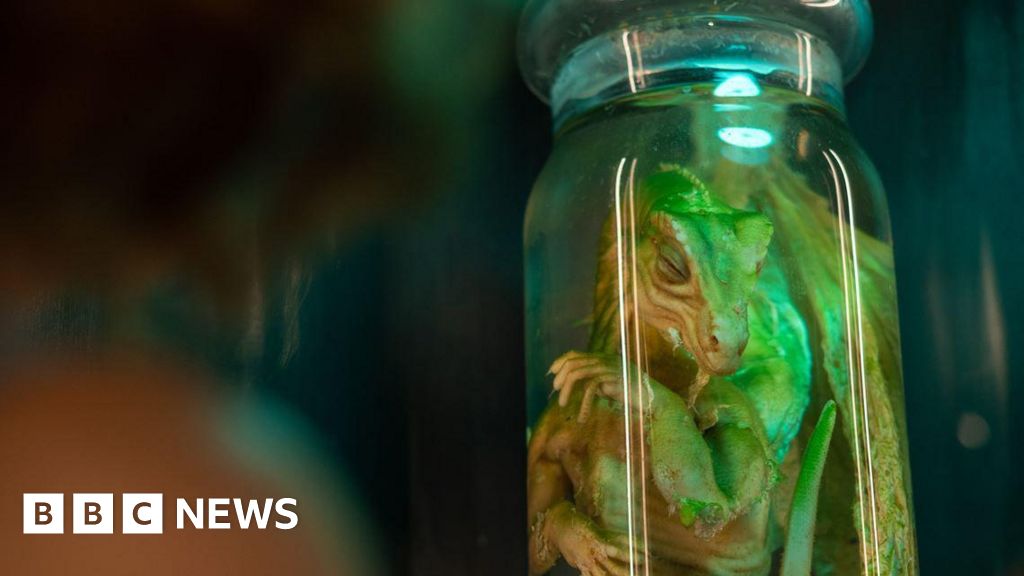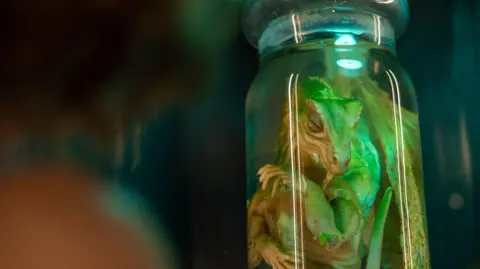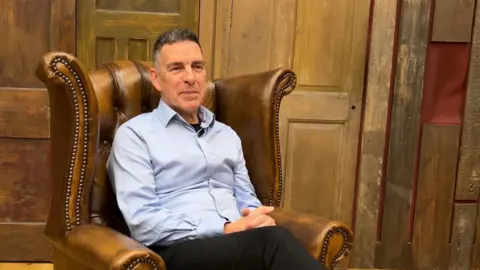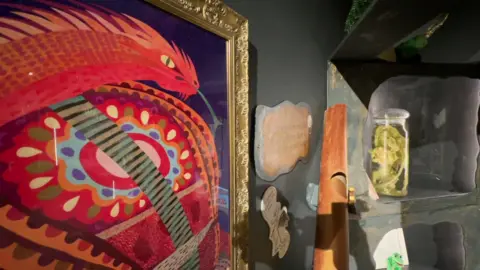
 The Story Museum
The Story Museum“We had television crews on our doorstep. It went into France, German, Japan, Italy, America… it went all over the world. Everyone reported it.”
In January 2004, Oxfordshire author Allistair Mitchell revealed a pickled dragon in a jar to the public, claiming it had been created by German scientists in the 1890s in the hope of fooling their British counterparts.
But it was a hoax of a hoax, created to publicise a fantasy novel he had written about dragons, and the fake baby creature managed to fool the media all over the world.
“I think 20 years ago,” the author said. “Adults were more believing in that than children today would be.”

Mr Mitchell said he had enlisted the help of a prop maker who had recently been working on the BBC series Walking With Dinosaurs.
He created the 1ft-tall latex embryonic creature, complete with umbilical cord.
The sealed jar was made to order by a glassmaker on the Isle of Wight, who had no idea what it would be used for.
“I tested it on friends and everyone went ‘wow’,” the author said.
Mr Mitchell then enlisted a professional photographer to take pictures.
“I sent those photos to the Evening Standard who published the story on the Friday – on the Saturday, it had gone all over the world.”

Mr Mitchell said the story had been founded on the “deep rivalry” between the Germans and the British scientific communities.
“The idea was that the Germans wanted to belittle and humiliate the British scientific community by delivering a hoax to the Natural History Museum and fooling the British establishment,” he said.
“Fortunately, the great British scientists realised it was a hoax and condemn the specimen to the furnaces.”
But a porter saved it and hid it for 100 years. It was then rediscovered 20 years ago.
“It was a hoax of a hoax,” Mr Mitchell said, adding that some people had been “extremely angry” at the revelation.
“They built their hopes up that this was finally proof that dragons existed,” he said.
“And there were other people who were glad to see it was a hoax because it disturbed the scientific community.”

His creation has been displayed at both London and Oxford’s Natural History Museums.
“The scientific community by and large embraced it for the fun it was,” Mr Mitchell said.
“It was it was the public that had more difficulty with it.”
Now, more than 20 years since the story was first published, he has loaned the dragon to the Story Museum in Oxford for its Here Be Dragons exhibition.
Director of creative programme at the museum Daniel Clark said that it was “really a story about stories”.
“For us as a museum, we celebrate the imagination of children and visitors,” he said.
“But there’s something incredible about this story because it’s kind of the perfectly woven tale that seemed to bypass reality for a moment and pull people into this wonderful world of dragons.”
